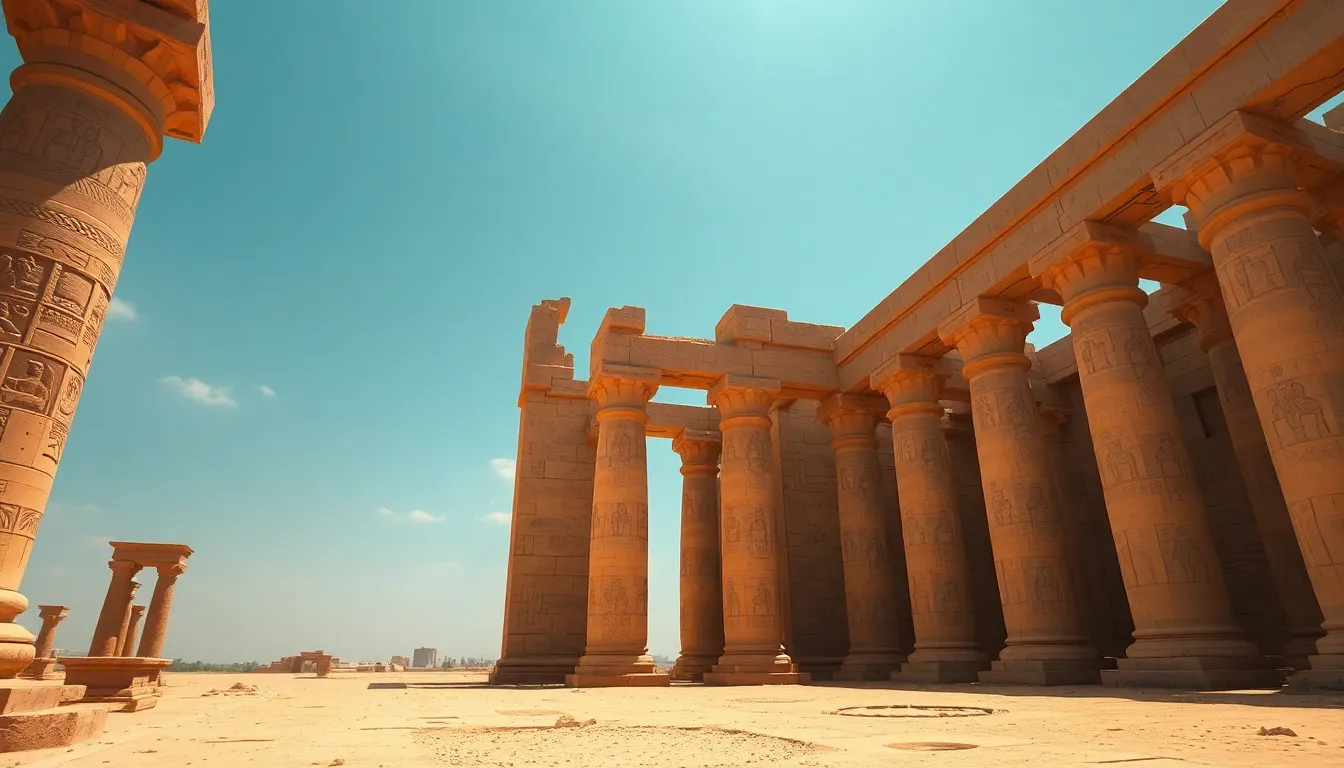The Temple of Medinet Habu: A Pharaoh’s Architectural Wonder
I. Introduction
The Temple of Medinet Habu is one of the most remarkable and well-preserved temples from ancient Egypt, located on the west bank of the Nile near Luxor. Built during the reign of Pharaoh Ramses III, this temple complex serves as a testament to the grandeur of the New Kingdom era and the architectural prowess of the ancient Egyptians.
Medinet Habu holds significant historical importance, not only as a religious site but also as a reflection of the socio-political dynamics of the time. This article aims to explore the historical context, architectural features, artistic elements, functions, preservation efforts, and the influence of Medinet Habu on modern culture.
II. Historical Context
A. The reign of Ramses III
Ramses III, often regarded as the last great pharaoh of the New Kingdom, ruled from 1186 to 1155 BCE. His reign was marked by military victories, significant building projects, and the consolidation of power amidst external threats and internal strife.
B. The socio-political landscape of ancient Egypt
During Ramses III’s rule, Egypt faced invasions from the Sea Peoples and internal challenges such as economic decline and social unrest. Temples like Medinet Habu were crucial in reinforcing the pharaoh’s divine authority and unifying the populace under his rule.
C. Importance of temples in Pharaoh’s rule
Temples were not merely places of worship; they were political centers that showcased the pharaoh’s power and piety. They served as a means to legitimize the pharaoh’s rule and were integral to the socio-economic fabric of ancient Egyptian society.
III. Architectural Features
A. Design and layout of the temple complex
The Temple of Medinet Habu is characterized by its grand scale and intricate design. The temple complex is divided into various sections, including a mortuary temple, a cult temple, and an outer wall that encloses the entire site.
B. Unique architectural elements
- Massive walls: The temple is surrounded by high, thick walls adorned with detailed reliefs.
- Pillared halls: The temple features impressive hypostyle halls supported by large columns.
- Courtyards: Open courtyards provide access to different areas of the temple.
C. Comparison to other temples in Egypt
Medinet Habu shares similarities with other prominent temples, such as Karnak and Luxor, but stands out due to its unique architectural style and the distinct emphasis on Ramses III’s military achievements in its reliefs.
IV. Artistic Elements
A. Iconography and symbolism in reliefs
The temple’s walls are adorned with intricate reliefs that depict various scenes, including battles, offerings, and rituals. These artistic elements serve to convey the power and divine favor of Ramses III.
B. Notable inscriptions and hieroglyphs
Among the most significant inscriptions are those that commemorate Ramses III’s victories against the Sea Peoples and his contributions to the temple. The hieroglyphs provide valuable insights into the beliefs and practices of ancient Egyptians.
C. The role of art in religious and political propaganda
Art in ancient Egypt was not merely decorative; it was a powerful tool for propaganda. The reliefs and inscriptions at Medinet Habu were designed to reinforce the pharaoh’s divine mandate and promote the state’s religious and political narratives.
V. Functions of the Temple
A. Religious practices and ceremonies
Medinet Habu served as a major center for worship, where priests performed daily rituals and offerings to the deities, particularly Amun, in hopes of securing divine favor for the pharaoh and the nation.
B. Role in the community and economy
The temple played a vital role in the local economy, providing jobs and resources to the community. It also served as a center for pilgrimage, attracting worshippers from various regions.
C. Medinet Habu as a center for worship and pilgrimage
The temple complex was not only a place of worship but also a site for festivals and gatherings that strengthened community ties and religious devotion among the people.
VI. Preservation and Archaeological Discoveries
A. Historical preservation efforts
Over the years, various preservation efforts have been made to protect the Temple of Medinet Habu from the ravages of time, weathering, and human activity. Archaeologists and conservationists have worked to restore and maintain its structures.
B. Recent archaeological findings
Recent excavations have uncovered additional artifacts, inscriptions, and features that enhance our understanding of the temple’s function and significance. Findings include pottery, tools, and remnants of ancient rituals.
C. Challenges faced in preserving the site
Despite preservation efforts, the temple faces challenges such as environmental degradation, tourism-related wear, and the impact of urban development in the surrounding area.
VII. Influence on Modern Architecture and Culture
A. Inspiration drawn from Medinet Habu in contemporary design
The architectural grandeur of Medinet Habu has inspired modern architects and designers, influencing various aspects of contemporary architecture, particularly in the use of monumental forms and symbolic design.
B. Cultural significance in modern Egypt
Today, Medinet Habu stands as a symbol of Egypt’s rich heritage, representing the achievements of ancient civilization and its continuing influence on Egyptian identity and culture.
C. Medinet Habu in tourism and education
The temple is a major tourist attraction, drawing visitors from around the world who seek to learn about ancient Egyptian history, architecture, and religion. Educational programs and archaeological tours are crucial in promoting awareness and appreciation of this historical site.
VIII. Conclusion
A. Summary of Medinet Habu’s importance
Medinet Habu is a remarkable example of ancient Egyptian architecture and a significant cultural monument that reflects the power of Ramses III and the religious practices of the time.
B. Reflection on the legacy of Ramses III
The legacy of Ramses III is intricately tied to Medinet Habu, which serves as both a memorial to his reign and a lasting symbol of ancient Egyptian civilization.
C. Future prospects for the temple and ongoing research
As ongoing research and preservation efforts continue, Medinet Habu will remain a vital link to understanding ancient Egypt’s complex history, ensuring that its stories and significance endure for future generations.




